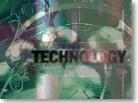|
Apple chronology
|
 |
January 6, 1998: 6:26 p.m. ET
Important events in the history of Apple Computer Inc.
|
NEWYORK (CNNfn) - The following is a snapshot of important events in Apple Computer Inc.'s history since the company was founded more than 20 years ago.
1976
Steven Wozniak, 26, designs a new computer called the Apple I. The machine was originally designed for hobbyists but 21-year-old Steve Jobs convinces Wozniak that it could be a commercial product.
Wozniak and Jobs bring the idea to their respective employers -- Hewlett-Packard and Atari -- but both companies decide to pass. Undaunted, they find financial support from A.C. "Mike" Markkula, a semi-retired engineer who'd made his fortune when chipmaker Intel Corp. went public.
1977
The next generation Apple computer, the Apple II, hits the market and becomes an instant success.
1980
Apple sales soar to $1 million-a-year and the Cupertino, Calif.-based company goes public at $22 a share.
1981
Apple's rags to riches story takes a detour. Faced with a saturated market, spurred in part by IBM's launch of a personal computer based on Microsoft's MS-DOS operating system, Apple is forced to lay off 40 employees. Wozniak is injured in a plane crash and takes a leave of absence. He returns only briefly and would leave again in 1985. Jobs becomes chairman in March.
1983
Apple's introduces a new computer called the Lisa. Despite being well ahead of its time, the powerful computer carries a hefty price tag of $10,000 and it bombs. In early 1983, Jobs begins to court John Sculley, then president of Pepsi-Cola to join Apple. In April, Sculley becomes president and chief executive of Apple.
1984
Apple, seeking to make a big splash, airs its famous 60 second commercial introducing the Macintosh during the Super Bowl. The commercial, broadcast only once, depicts drab workers sitting beneath a giant screen of a Big Brother figure gazing out at them. An athletic young woman races in and throws a sledgehammer through the video screen, effectively smashing IBM's grip on the world.
1985
The commercial draws praise and early enthusiasm from computer users but in 1985, the Mac is a flop and Jobs is ousted from Apple by Markkula and Sculley in a dramatic boardroom coup. Over the next few months, Apple is forced to lay off 1,200 employees, roughly a fifth of its work force. The company also posts its first quarterly loss. Apple's share of the U.S. personal computer market peaks at 15 percent.
1986
Apple and Microsoft tangle over Microsoft's new operating system, Windows 1.0, which Apple claims contains many of the same features as Apple's operating system. Both sides later sign an agreement which prevents Microsoft from using Apple's technology in Windows 1.0 but says nothing about future upgrades. The agreement would become a key piece of evidence in later litigation.
1987
Apple introduces the Mac II. Unlike the original Mac, the Mac II is built with expandability in mind. Sales soar and Apple is once again in the spotlight.
1991
After resisting the urge to form alliances, Apple teams up with IBM and Motorola to create the PowerPC chip as a replacement for the Mac's microprocessor. With IBM's marketing muscle, Apple holds out hope it can become the standard of the industry. But the dreams never materialize. IBM and Apple briefly discuss a possible merger, but that also fizzles as IBM's new boss, Louis Gerstner, tries to refocus the computer giant.
1993
Sculley is ousted after his pet project -- the handheld Newton -- flops. Michael Spindler, who was running Apple's European operations, is in to restore order to Apple's operations.
1995
Chronic parts shortages results in huge backlogs just as the PC boom is hitting full stride. Apple enters the crucial holiday shopping season with too many low-end Macs on its hands and sales suffer.
1996
Apple's board of directors, stunned by the company's sudden decline, pushes Spindler out and replaces him with outside director Gilbert Amelio, who had engineered a turnaround at chip maker National Semiconductor. Amelio slashes thousands of jobs, allowing Apple to end the year with a modest $25 million profit in the final quarter. But sales continue to slide and merger talks with Sun Microsystems break down. Apple acquires NeXT Software, a move which reunites Apple with its former co-founder Steve Jobs.
1997
Jobs begins to exert more control at Apple. In July, Amelio was out and Jobs became acting CEO while the company looks for a replacement. One month later, Apple stuns the computer world by announcing Microsoft is investing $150 million in Apple and committing itself to developing software for the Mac. Thousands of Apple fans at the MacWorld conference boo when an image of Microsoft Chairman Bill Gates shows up on a giant screen. Apple's market share in the United States slips to 4.0 percent in the first quarter before recovering slightly to 4.4 percent by the third quarter.
With the war with Microsoft over, Jobs moves to tackle another long-standing problem -- the issue of clones. Believing the clones are cutting into Apple's high-end market, Apple buys out Power Computing's MacOS license, and much of its engineering staff. Apple also buys out its MacOS licenses from Motorola and IBM. The clone experiment ends.
1998
At the semiannual MacWorld trade show, Apple once again stuns Wall Street by telling investors it earned more than $45 million in the first quarter of fiscal 1998, thanks to cost-cutting and higher sales of its new G3 family of computers. Wall Street, which had expected Apple to lose money in the quarter, responds by driving Apple's (AAPL) stock price up nearly 20 percent to 18-15/16. For a chart of Apple's stock price over the last five years, click here.
Source: Company reports, CNNfn research.
|
|
|
|
|
|
Apple
|
Note: Pages will open in a new browser window
External sites are not endorsed by CNNmoney
|
|
|
|
 |

|

